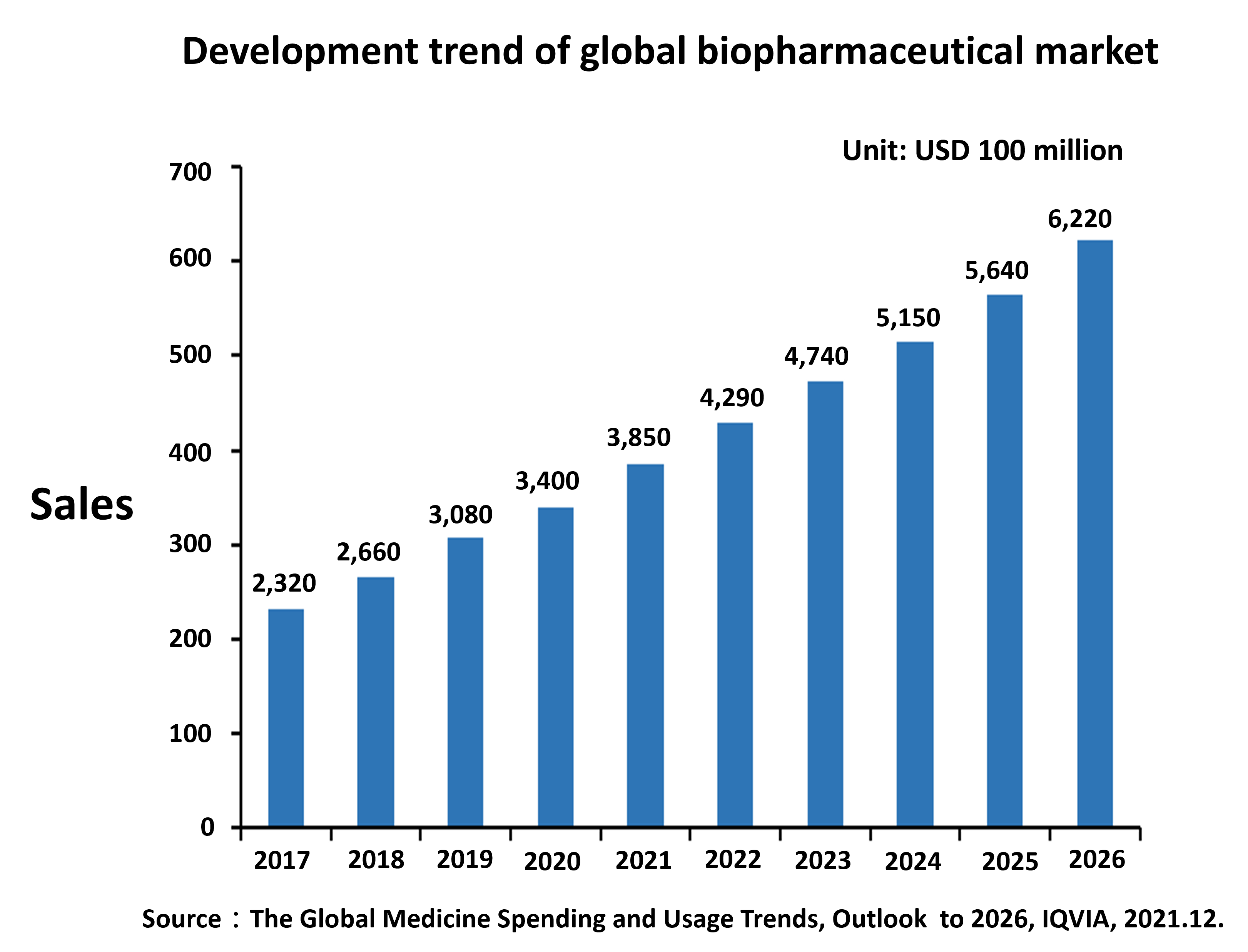Current drugs can be divided into small molecule drugs and large molecule drugs according to their molecular weight. Small molecule drugs, also known as chemical drugs, have long been the basis for drug development and are mostly produced by chemical synthesis. Although the stability of the drug is higher, it may cause drug interactions and serious side effects such as weakened immune system, nausea, vomiting, hair loss, etc. The toxicity of chemical drugs is higher compared with protein drugs. The approved drugs- pirfenidone and nintedanib which are currently used to treat pulmonary fibrosis are belong to this category. More than 90% of current on-the-market drugs are small molecules, but large molecules are quickly rising in popularity and importance. Large molecule drugs, sometimes referred to as biopharmaceuticals or protein drugs, are much larger than small molecule drugs, and they are produced in, extracted from, or semisynthesized from genetically modified organisms. Protein therapeutics have several advantages over small-molecule drugs. As proteins have the most dynamic and diverse role of any macromolecule in the body, catalyzing biochemical reactions, forming receptors and channels in membranes, providing intracellular and extracellular scaffolding support, and transporting molecules within a cell or from one organ to another, they can follow the normal physiological operation mechanism to treat specific groups of people and cause fewer side effects.
Because biopharmaceuticals show better curative effect and less side effect, they become the patients’ preferred item. Biopharmaceuticals have increased rapidly and developed into best-selling drugs in a short period of time. With the rapid development in biology and biotechnology recent years, protein drugs have gradually become mainstream products in the global pharmaceutical market. According to statistics, eight of the top 10 prescription drugs in 2006 are chemical drugs, and the remaining two in the top 10 are protein drugs. 10 years later, protein drugs become the most popular drug. fourteen of the top 20 prescription drugs in 2020 are protein drugs. According to the survey research of IQVIA company, the global biopharmaceutical market size accounted for USD 385 billion in 2021 and is estimated to garner a market size of USD 622 billion by 2036. It shows that biopharmaceuticals have become the international mainstream and the market value is very considerable a.
Because biopharmaceuticals show better curative effect and less side effect, they become the patients’ preferred item. Biopharmaceuticals have increased rapidly and developed into best-selling drugs in a short period of time. With the rapid development in biology and biotechnology recent years, protein drugs have gradually become mainstream products in the global pharmaceutical market. According to statistics, eight of the top 10 prescription drugs in 2006 are chemical drugs, and the remaining two in the top 10 are protein drugs. 10 years later, protein drugs become the most popular drug. fourteen of the top 20 prescription drugs in 2020 are protein drugs. According to the survey research of IQVIA company, the global biopharmaceutical market size accounted for USD 385 billion in 2021 and is estimated to garner a market size of USD 622 billion by 2036. It shows that biopharmaceuticals have become the international mainstream and the market value is very considerable a.

- 2022生技產業白皮書_經濟部工業局
